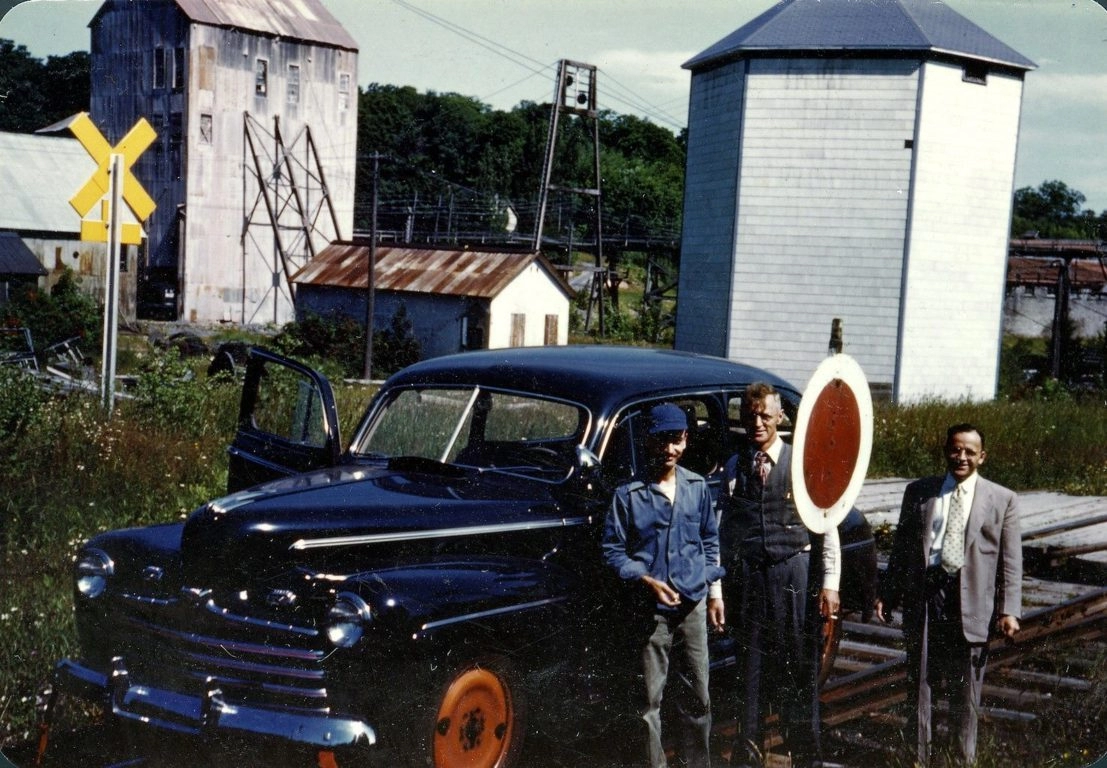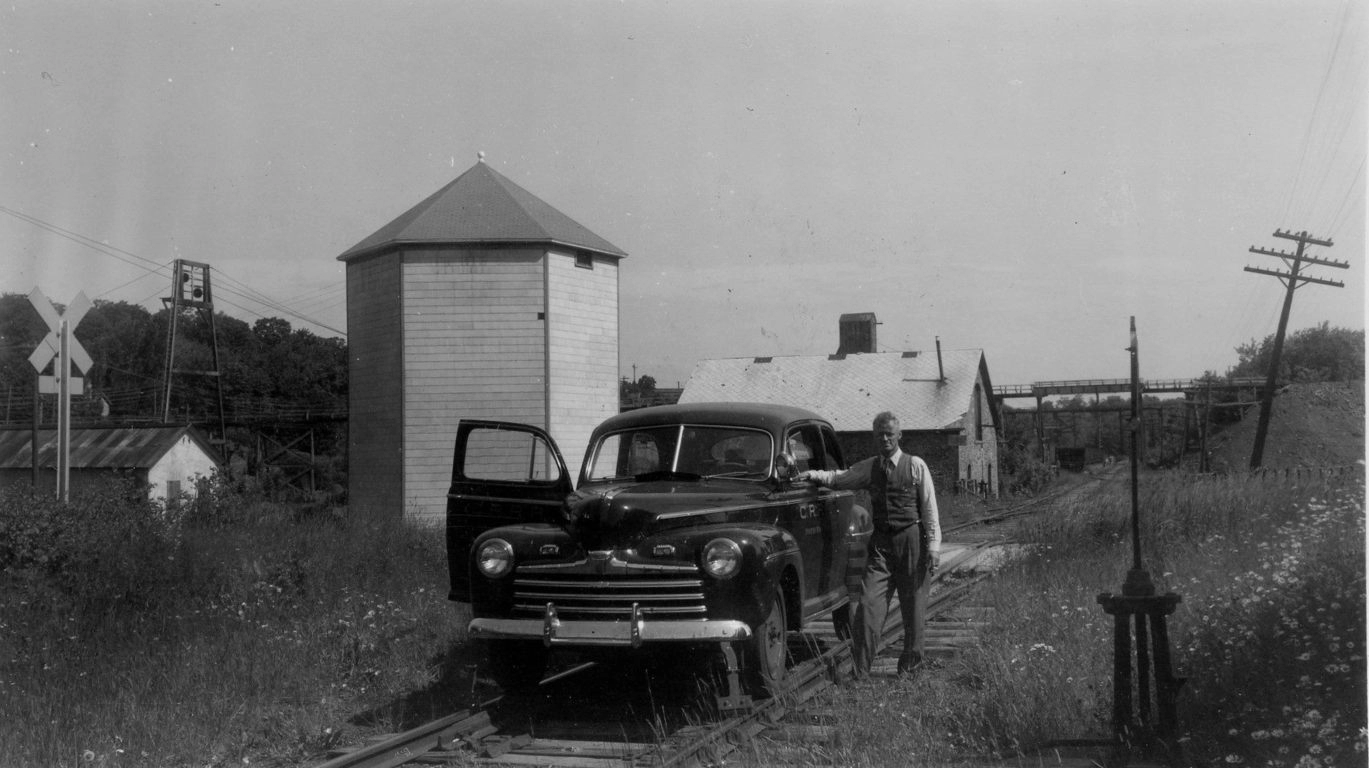- Details
- Hits: 2909
Mine: Champion Mine, Painesdale, MI
Opened → Champion Mine → Closed
Operated for 68 years.
From: 1899
The Champion Mine was located on the north end of the Baltic Amygdaloid, south of Trimountain in Houghton County. The mine was first worked in 1897. The mine had a double-tracked shaft. [HAL]. It ultimately had five shafts and was a profitable operation.
This was the last major new deposit opened in Houghton County. [UPM]
Owned by: Copper Range Consolidated Company
Produced: Copper Ore
Method:
Railroad connection: Copper Range Railroad
Stamp Mill/Smelter: Stamp mill at Freda on Lake Superior. Michigan Smelter west of Houghton.
Until: 1967
Lifetime Production:




Photo Info: Four photos of the Copper Range track car and railroad managers in front of the Champion Mine shaft #4 in the 1950's. [Greg Bunce collection]
Notes
Though the Champion, Trimountain and Baltic mines were under separate ownership, they made temporary arrangements with other companies to mill and smelt their product prior to building their own stamp mills. [HAL]
When the Champion Mine was originally opened, it leased stamp heads in 1902 at the Atlantic and Baltic Mills on Lake Superior until its own mill was built in 1903 in Freda.
Initially, the Champion had four shafts (named B, C, D and E). Shaft E was the deepest at 1,015 feet. They initially stamped their rock at the Atlantic Mill at Redridge in January, 1902. They also used one head at the Baltic Mill. November 28, 1902 their own mill at Freda went into operation with one head. These three heads stamped 4.2 million pounds of refined copper in 1902. [CRR]
This was the last major new deposit opened in Houghton County. [UPM]
A number of buildings from the mine are still in place.
Time Line
1899. The Champion Mine was opened in 1899 on the South Range (Baltic) lode. It was originally owned jointly by the St. Mary's Mineral Land Company and William A. Paine of the Paine Webber investment firm.
1906. The "E" Shaft hoist frame was located southeast of Painesdale. It was constructed in 1906 and enlarged in 1908. [UPM]
1901. Paine gained control through the Copper Range Consolidated Company. This mine operated continuously during the depression and intermittently until 1967.
1901. December 2. A new Copper Range Consolidated company was formed to consolidate the Baltic Mining Company and the Copper Range Company. Shares of the new company were to be issued one share for each share of the Baltic and 1.5 shares for shares of the Copper Range company. [CRR]
1901. The reorganized Copper Range Consolidated Copper Company absorbs the Baltic Mining Company in a stock swap deal. [HAL]
1903. The reorganized Copper Range Consolidated Copper Company absorbs the Trimountain Mine in a stock swap deal, similar to the arrangement with the Baltic Mine in 1901. [HAL]
1905. A number of specially built cars have been received at Trimountain for use in conveying its mineral to the Michigan smelter. This class of cars will also be rendering service in the near future at Champion and Baltic, after which the use of barrels will be entirely dispensed with. [DFP-1905-0402]
1914. The mine adopts electric haulage locomotives in the mine. [HAL]
1940. The Champion Mine is the only mine which survives the depression. [MIS-2024-1]
1965. The Champion mine continues to be active, operated by the Copper Range Co. [DMP]
1967. The Champion Mine discontinues operation. [MIS-2024-1]

